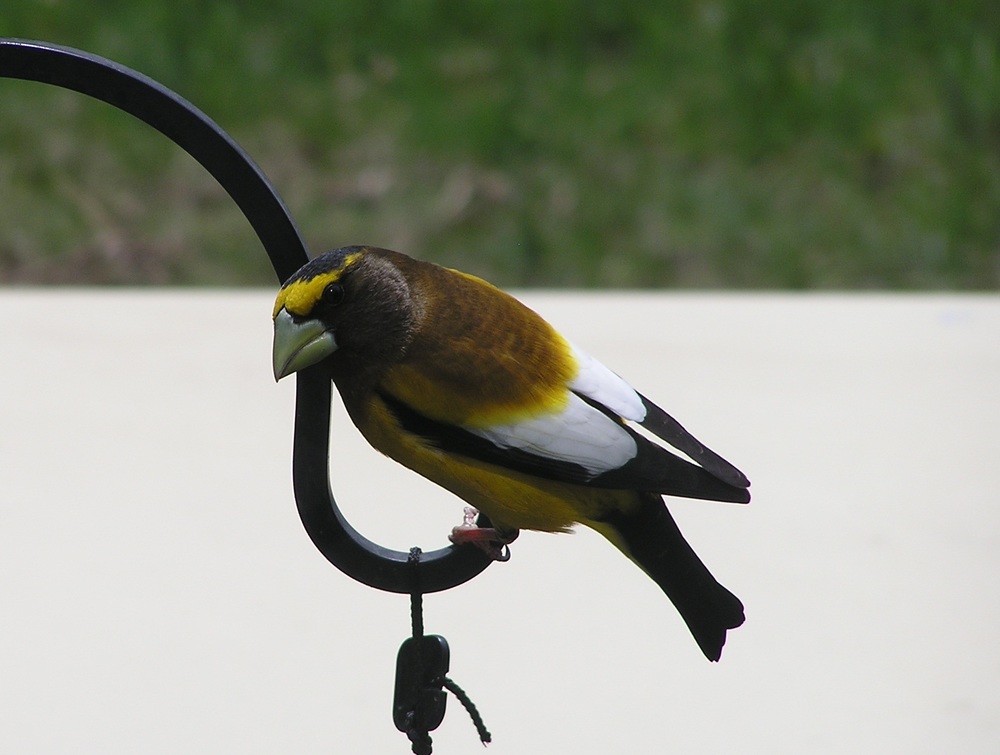Going For Grosbeaks
/
“I understand these are sort of rare for the Adirondacks but you might want to confirm with an old timer. They were at our feeder today,” Sharon wrote us in an email.
We did one better and caught up with Adirondack bird expert Joan Collins, by no means an old timer, having climbed all 46 of the High Peaks. Joan runs Adirondack Avian Adventures, in Long Lake. She confirmed the birds are Evening Grosbeaks
“The picture shows a male. He is probably one of a nesting pair,” Joan told Schroon Laker today.
“The males are very colorful, the females are more muted. This is the season when the birds split up and pair up and start nesting after spending the winter in large flocks”.
Joan said large groups of grosbeaks are a common sight at bird feeders throughout the winter. In fact once the birds find a source of wild bird seed, they will have no hesitation in eating a good intentioned bird lover out of house and home.
“This year I had 110 birds at my feeders. They have huge appetites, which has earned them the nick-names “Gosepigs” or “Flying Pigs”, because they pig out at bird feeders. They are attracted to solid bird feeders because they are big birds that need something sturdy. They are not easily intimidated.”
The Adirondacks are at the southern tip of their nesting grounds. Grosbeaks are boreal birds, attracted to spruce, furs and the boggy areas of the Adirondacks. Their range stretches from Canada to Mexico to the Rockies, Joan said.
And they have fans among birders who are attracted by their size, color and big beaks “I’ve had folks from West Virginia and Delaware come up to see them,” Joan said.
Joan told us the Evening Grosbeaks are irruptive migrants -- meaning their migration is irregular and often in response to food availability. You can read more about the grosbeaks at the website of Cornell Lab of Ornithology. You can learn more about Joan’s guide service here.









